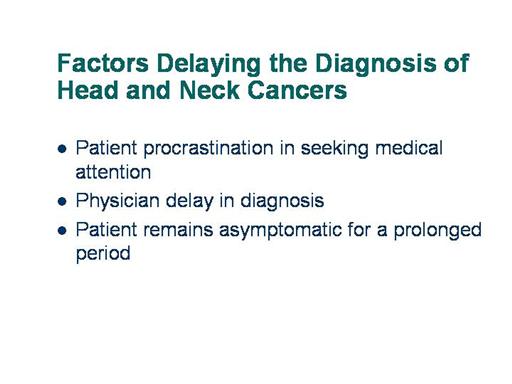| front |1 |2 |3 |4 |5 |6 |7 |8 |9 |10 |11 |12 |13 |14 |15 |16 |17 |18 |19 |20 |21 |review |
 |
Two-thirds of oral
cavity cancers and 77 percent of oropharyngeal cancers are not diagnosed
until they are larger than four centimeters in diameter.
Patient procrastination in seeking medical attention, delayed
diagnosis by physician, and prolonged asymptomatic period all contribute
to late diagnosis.
Physicians can avoid
diagnostic delays by identifying patients who may be at increased risk
of head and neck cancer, maintaining a high index of suspicion,
conducting comprehensive examinations of patients, and attending to
common symptoms. Patients at high
risk who complain of persistent symptoms in the absence of demonstrable
findings should be referred to a head and neck surgeon.
|